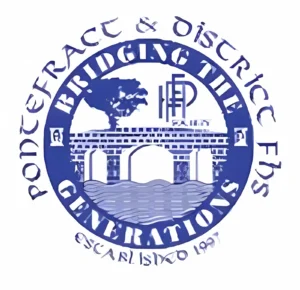Domesday to the 21st Century
A Village Though Time
In common with most villages, Badsworth existed before 1086. It is listed in the Domesday Book as Badesuurde meaning Bades or Baedi’s enclosure..”In Badesuurde, Uttone and Rugartorp two brothers had 9 carucates and 5 bovates of land for gold where 6 ploughs can be…………
A church is there and a priest and one and a half acres of meadow. Pasturable woodland one leuga in length and three furlongs in bredthe”. This seems to indicate an Anglo Saxon settlement with open fields around a nucleus of houses and it is believed, a wooden Anglo Saxon church.
The Anglo Saxons set up many “springline” villages which offered an assured good quality water supply from natural local springs. Close to the edge of the village heading out towards Thorpe Audlin can be seen the legacy of the strip system in the somewhat corrugated appearance of the field whereby each peasant was allocated a number of strips in open field, ploughed deep to gain more surface area.
The village today while similar in shape to many villages in the North of England, still reflects its past. Its “nucleated” character with the Church of St Mary was and still is its central focus. It is thought that there was a village green situated close to the church at which a community well was sited for use by the villagers. There remain several wells in and around the village – some apparently still useable but others which are filled in or disused. This seems to suggest that the village green was not necessarily a dominant focus for the community.
Whilst the village is of nucleated character, its shape is broadly rectangular and typical of many villages in the North of England.
The History of Badsworth Hall and The Grange
The Hall
Information is very sketchy on the Hall, but we have some notable dates and residents.
In 1653 the forfeited Manor of Badsworth was purchased by Sir John Bright, after Parliament sequestered it from the Dolman family during the Civil War, for £8600. The hall became his principal residence, he was appointed Sheriff of Yorkshire 1654 – 1656. He died on 13th September 1688 and was “buried with great pomp in the Chancel of Badsworth Church” on 21st September. There is a monument on the wall in Badsworth Church paying tribute to him.
According to the 1852 census the Hall was the residence of Joseph Scott Esq. The famous architect John Carr (Born in York, lived in Horbury, married in Featherstone) was associated with the building, renovating, extending or demolishing many buildings – public, churches, bridges and domestic throughout Yorkshire and the Country as a whole and his last great unfinished work was the San Antonio’s hospital in Oporto Portugal.
He was the Lord Mayor of York in 1770 and 1785 and died, unmarried in 1807 leaving property worth between £150,000 and £200,000. Unfortunately all we can find in the records is that he demolished Badsworth Hall in 1780!
As the last Hall was described as Georgian (1730 – 1800), we assume the Hall was built shortly after this demolition.
The seat of power in the village was Badsworth Hall which was demolished in the late 1940s. The last Lord of the Manor was Richard Heywod Jones, who purchased the Manor in the 1850s, and his family is much in evidence in the Church. Richard himself was killed by lightning whilst at camp with the local militia in Harrogate in 1900, he left a widow and daughters.
All the Daughters married men who had estates in their own right so, on the death of his widow in 1926 the Badsworth estate was broken up and auctioned off
The Estate was described in the Sale Catalogue as:-
“Comprising the picturesque old Georgian Mansion with Modern conveniences, 10 Dairy Farms, important Building Sites, Accommodation Lands, Small Holdings and the greater part of the Village of Badsworth amounting in all to about 1560 acres.”
At one time the Hall was connected to the “Bothy” – Weavers cottages – by an iron bridge.
Rumour has it that this fell down as a cart passed under shaking the foundations, the remains of these are still visible on Ninevah Lane. The original cottages have been converted into “The Cottage”, an extremely attractive property.
After the Sale, Major Holliday lived in the Hall before renting and eventually buying Copgrove Hall in 1936
The present building bearing the name is in fact the original entrance to the drive up to the Hall and consisted of the archway and stables, this is now a Grade II listed building.
Badsworth Hall is mentioned in “God’s Good Man – A Simple Love Story” by Marie Corelli.
It was the home of “Sir Morton Pippitt”. The site of the Hall is now occupied by the houses of Badsworth Court.
Badsworth Grange
Badsworth Grange standing on Back Lane was built for Richard Heywood’s unmarried sisters. Around 1940 Mr E.C Hamilton-Russell, a director of the Netherton Coal Company (Newcastle), was resident at the Grange and subsequently listed after 1947 (Nationalisation of the Coal Industry) as living in Hexham.
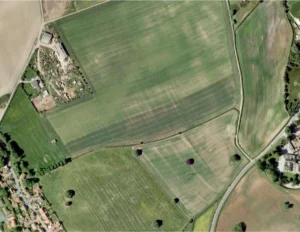

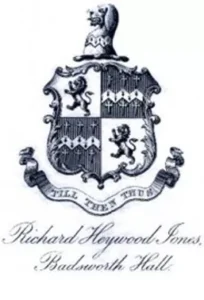
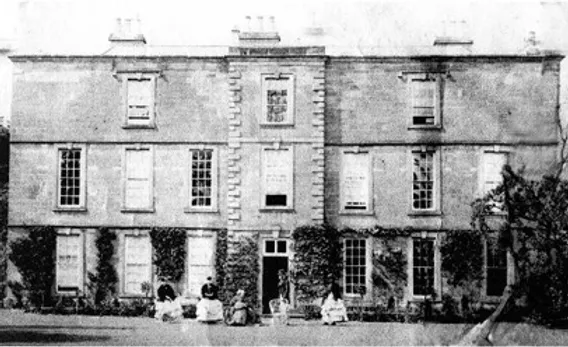

The earliest images of Badsworth Hall we have. Image on the right taken in 1926

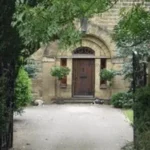
Badsworth Hall today is the old stables and gatehouse of the original Hall and a grade 2 listed building


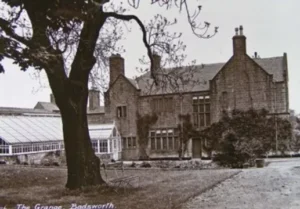
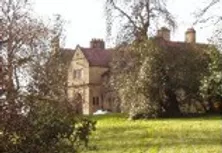
Read more about Badsworth in this book
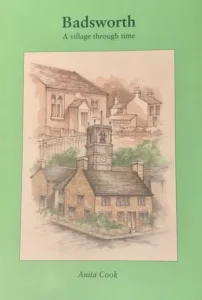
Have you ever wondered how old the Church is, or what the St Mary’s Centre was used for? Exactly who is the Lawson Hut named after? What did the village look like 100 years ago, or even just back in the 1960s? These, and many more questions, are answered in a new book, written and published by a local resident, which traces the history of the village since the Domesday Book in 1086.
The book is not a history text book and is intended to give an overview of how the village has evolved over the last 1000 years to provide insights in to some of its famous residents, historic buildings and social development. The series of short chapters look at a variety of topics from school life since the 1880s, village life in WW1, the church and even the story of an infamous murder. In compiling the book I have used as many photographs as possible including comparing views of the village in the early 1900s and the modern day.
The book, which is printed in colour and contains 96 pages, is available to buy at £10 per copy from Anita Cook. The book is published privately and all profits from its sale go to charity.
Research Badsworth History
Pontefract History Society have a wealth of information and resources to help with your research into local history. The society hold records from St Mary’s dating back to 1771. Visit the Society’s website (https://www.pontefractfhs.org.uk) for more details and to order one of their many publications.
